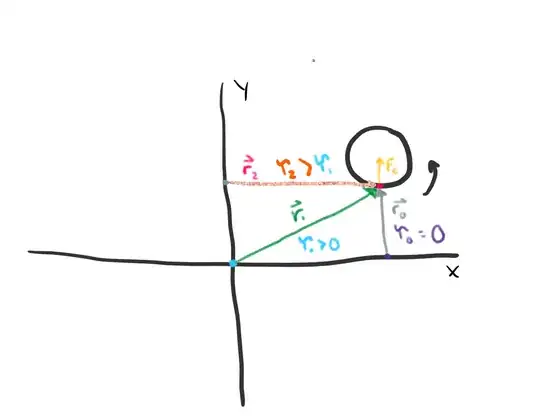I'm going to illustrate this confusion of mine in a thought experiment (poorly):
Here we have origins for $\vec r_2, \vec r_1,$ and $\vec r_0$.
What's undeniable is that this wheel is spinning in uniform circular motion on it, as I am defining it. There is no tangent acceleration on the particles on this wheel. Here we have $3$ different origins at different places, which have their own distance vectors $\vec r_0, \vec r_1, \vec r_2$ to that point. The particle is experiencing a centripetal force colored in yellow. From the origin as the center of mass of the wheel, the radius vector and the force vector would be anti-parallel and thus no torque would be active on the particle. However, according to these origins I've colored, there is a torque on the particle at each origin with the exception of $r_0$, although in the next instant of time there will be once the position vector changes as it follows the particle. This notion that it's feeling a torque with its only active force on that particle being the centripetal force bothers me. The particle on the wheel is not actually experiencing a torque! How could it? It doesn't actually, or at least relative to the center of the wheel, but it does relative to the radius vectors? I know torque is different relative to your origin, but how can we have this scenario I've underscored? It makes me feel like torque can give unreliable interpretations on the motion of this rotating particle.
And, in addition, like its linear analog, applying a torque on an object will give it energy, just like applying a force on an object will give it energy. But the torque here depends on the vantage point, so what it seems like to me is that the wheel is gaining different amounts of energy from different vantage points depending on the torque it's experiencing according to each radius vector (or vantage point/origin).
How do I make sense of all this? The kinetic energy on the wheel has to be uniform regardless of vantage point.
